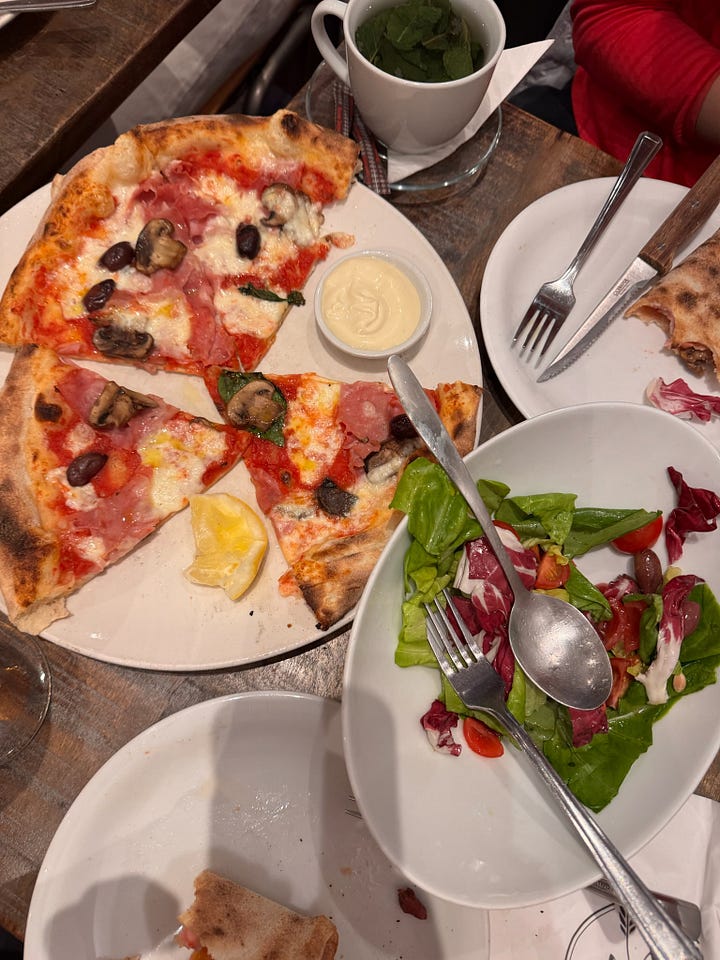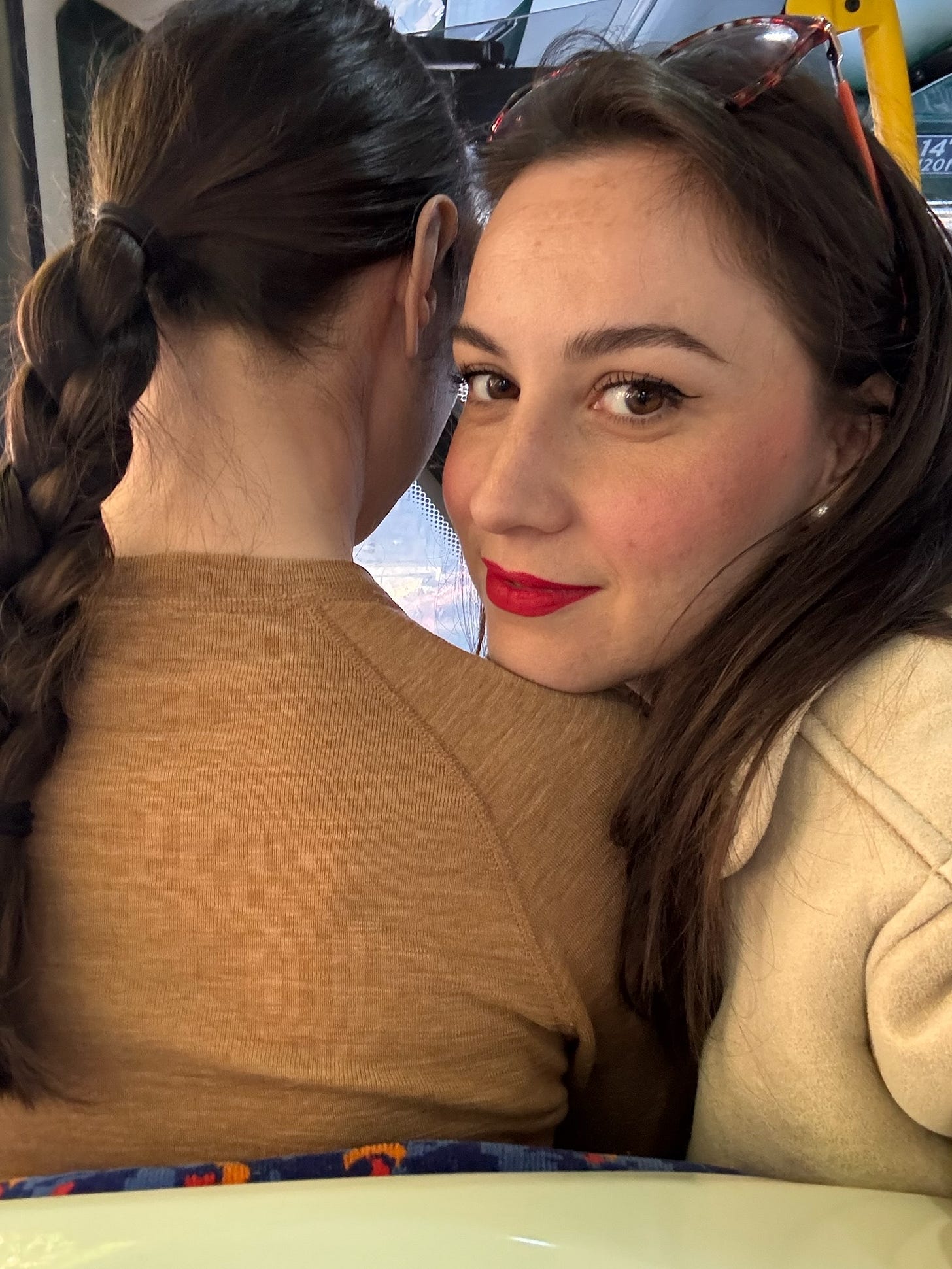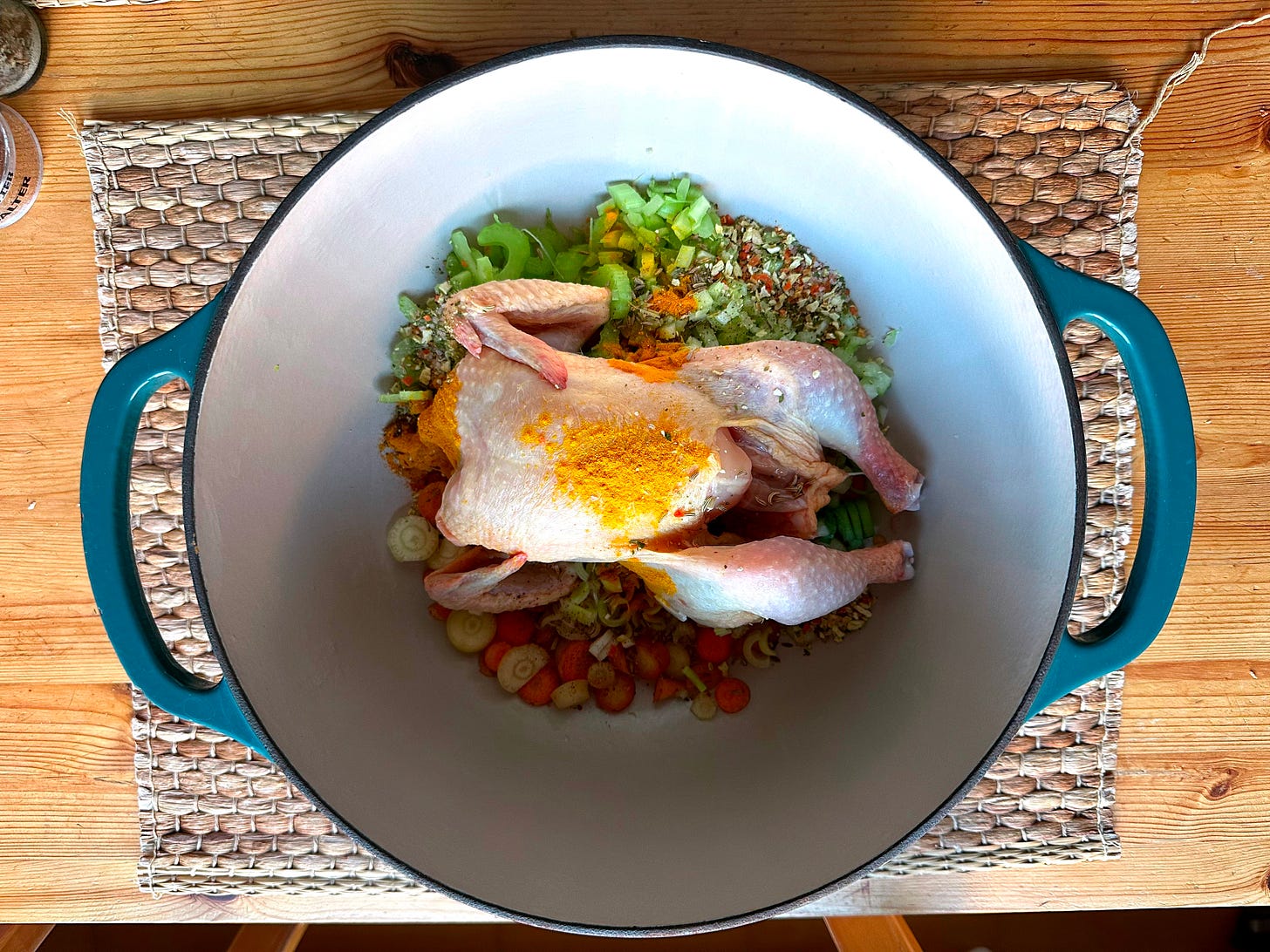I’m writing this as my friend Sultana is on her flight back to Turin, returning home after spending this past weekend in London with me. Considering we haven’t seen each other in person since before the pandemic, and we have been reunited after such a long time, the weekend felt extra special and intense.
Sultana is bubbly, fun, and in possession of an unbounded, toddler-like energy. Maybe this is what having a six-year-old son does to you—I don’t know. She consumes life with a voracity and appetite that leave me in awe. Whether she’s snapping pictures of a quiet street lined with beautiful houses, basking in the lovely London sun on my terrace, or gobbling down food we just cooked, she does everything with all her might.
On Friday afternoon, when we arrived at my London flat (which is currently in the midst of chaos and boxes after the painting job), the only thing she wanted was to have a ciggie on the terrace, bask in the sun, and enjoy some great food.
While I fretted about cleaning up just enough and making space for us to move around, she remained unfazed by all the boxes and chaos, and rather focused on the present moment and our lively conversations. She found the flat beautiful in its state of flux, with all its piles of boxes. I realized she saw this as an opportunity for photos and “urban art”, the way light fell on objects and spaces, rather than as chaos.
Of course, it was perfectly normal for the flat to be in such a state after three weeks of painting; it was foolish of me to expect to find it clean and orderly. Experiencing her attitude and perspective towards the matter, I suddenly relaxed and accepted the situation for what it was, rather than trying to change it.
Throughout the day, she asked if I needed help here and there. Although a critical voice in my head insisted, “You don’t ask guests to do anything,” I let her help anyway. My new way of thinking knew better.
Laughing, we reminisced about a similar situation shortly after she had given birth to her son Aaron, when her house was in a similar state (albeit not being repainted). When I visited her three days into motherhood, I took in the state of the house and thought, “Yes, this is how a house with a new baby looks like.” I set to work cleaning and tidying while she was feeding him. When she finished, she came to apologize for the “mess,” and I remember telling her, “Are you kidding? This house has such liveliness to it, you can see someone is actually living here.”
Then she relaxed.
On Friday night, I took her to Oivita pizzeria, where she had a blast. And, of course, her much-demanded Aperol spritz. I was let know that this will become a regular dinner spot whenever she visited me in London.


On Saturday, we went to a Tony Ann concert at the Barbican with Pauline (another friend of mine), and it’s safe to say the experience was mind-blowing. Tony was touring with Arkai, a band from New York whose violinist and cellist are incredibly talented.
At some point during the concert, I felt my body dissolve into the music. I was so entranced and swept up in the rush of emotions that it felt like an energy was buzzing in every single cell of my body. That’s the only way I can describe it. Sultana seemed to have experienced something of the sort, too, and we both left the concert hall asking, “What the heck just happened there?”
It was so beautiful it hurt.
While riding this wave of intense emotion, I found myself thinking about art—what defines something as art and how we collectively come to call something art. I realised that if you look closely enough, every corner of life is art. It’s how nature envisioned everything around us, even the grotesque. Art is about harmony, but it is also about imperfection and completeness. Ultimately, art is in the eye of the beholder.
I sometimes laugh at the idea of having everything so curated and aesthetically pleasing, especially when I catch myself in the act of perfectionism on the food photos I take for my posts. Reality and life simply don’t work that way; they’re always moving and transforming. So are dishes, if you think about it: they start as one thing and, over time, transform and become multilayered.
Before Sultana booked her ticket to London, she had two main requests: that I show her at least one of my recipes and promise to spoil her with great food.
Your “art food”, she said.
Before she arrived, I was fretting about what to cook for her during our two full days together, sifting through the myriad recipes in my album. As always, the universe had its ways, and things fell into place naturally.
On Saturday afternoon, after a full day of walking the city, all we craved was a warm, cosy soup to wash away our tiredness and lack of sleep from the night before.
So, I set myself to the task. I had long promised her a recipe that required her to “just add water,” and I believe I delivered on that promise. Sultana couldn’t believe how simple and nutritious this recipe was to make.
Her requests? Marked as done and done.
And now, to the soup recipe.
Poussin soup
Serves: 6
Prep time: 10 minutes
Cooking time: 45-60 mins
Ingredients
2.5 liters of water (or 2 L of water and 500 mL of chicken/vegetable stock)
1 Gressingham poussin or similar
250g shiitake mushrooms or a mix of mushrooms
2-3 medium - large carrots
1 medium-sized parsnip (optional)
2 celery stalks
1 small bunch of parsley
1 small piece of ginger (1-2 cm)
1/4 of a leek stalk
2 medium garlic cloves
1 big bay leaf (or two small ones)
1/2 teaspoon fennel seeds
1/2 teaspoon cumin seeds
1/4 to 1/2 teaspoon of turmeric powder (depending on your taste)
Salt and freshly ground pepper to season
1 full teaspoon of ghee
Method
Wash and peel all the root vegetables, including the ginger.
Cut the celery stalks, leek, carrots, and parsnip julienne, smash the garlic after peeling it to release its flavour, and add everything to a pot. Due to the even heat distribution, I prefer a Dutch oven for this soup.
Add the poussin to the vegetables, followed by the seeds, spices, bay leaves, and ghee, and season well with salt and pepper.
Add water and set the pot on medium heat with the lid on. When the soup reaches the boiling point (about 20 minutes in), turn the stove to low—medium heat so the vegetables don’t overcook.
In the meantime, wash and pat dry the mushrooms. Slice them and fry them in a pan with a tiny amount of ghee or oil, and when they’re done, add them to the soup. This step should be done when the vegetables and poussin are done.
Wash and finely cut the parsley, then add it to the soup. Set the stove to off, and let the soup cool for about 10 minutes before serving.
Serve with toasted bread and butter.
P.S. Let me know if you try this recipe.
xx, Ana




